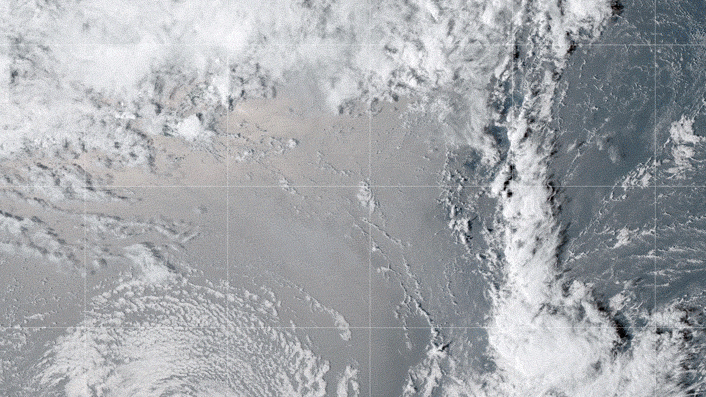Record-shattering Tonga volcanic eruption wasn't triggered by what we thought, new study suggests
Scientists think Tonga's record-breaking 2022 eruption was triggered by gas building up to a "critical point" rather than by a reaction between magma and seawater as previously assumed.

Scientists have proposed an alternative explanation for why the record-shattering Tonga volcanic eruption of 2022 was so violent: The explosion may have been triggered by gas, rather than by a reaction between magma and water as previously suggested.
Hunga Tonga-Hunga Ha'apai, an underwater volcano in the South Pacific Ocean, erupted on Jan. 15, 2022, unleashing the most intense lightning storm ever recorded and the first known mega-tsunami since antiquity. Previous research indicated that the underwater eruption was fueled by two merging magma chambers, but exactly what sparked the blast has remained unclear.
"Previous models have assumed magma-seawater interaction, but heat transfer considerations show this to be untenable and direct evidence is not provided by satellite data," researchers wrote in a new study, published online April 21 in the Journal of Volcanology and Geothermal Research. Instead, they wrote, bathymetric (water depth) and satellite observations point to a colossal buildup of gas beneath a seal inside the volcano that suddenly broke on Jan. 15 after a series of smaller eruptions between Dec. 19, 2021, and Jan. 13, 2022.
This seal may have formed through a reaction between volcanic rocks and gas rising from the depths of the volcano. "It is now well established that fast reactions occur between the [sulfur dioxide] and [hydrogen chloride] contents of magmatic gases to produce minerals including anhydrite, quartz and sulfides as they expand from source to surface," the researchers wrote in the study. "Their formation leads to a choking of flow paths and potentially sealing of the gas flux through the volcano."
Related: Mexico's most dangerous active volcano erupts 13 times in 1 day
Gas trapped inside the volcano likely accumulated over several months and then reached a "critical point" when the pressure finally ruptured the seal and triggered an explosion, they wrote. The energy amassed underground was so great that it propelled an ash cloud 36 miles (58 kilometers) into the sky and blew out a crater 2,800 feet (850 meters) deep and 1.2 to 1.8 miles (2 to 3 km) wide.
The Tonga eruption — which may have been even more powerful than the 1883 Krakatoa eruption — fed itself by exploding away ever-deeper layers of rock and releasing ever-higher-pressure gas, entering a runaway, "supercritical" state, the researchers noted in the study. The eruption eventually subsided as the gas reservoir emptied and seawater flooded into the gaping crater.
Get the world’s most fascinating discoveries delivered straight to your inbox.
"What we witnessed during this event was a Plinian eruption," lead author Richard Henley, an honorary professor of material physics at the Australian National University, said in a statement. "These are the kind most people think of when imagining an erupting volcano — very intense, violent and sudden with extremely high ash columns."
Henley and his colleagues suggested that gas seals could be the key to why most, if not all, Plinian eruptions are so explosive. Unlike previous models that assumed a reaction between magma and seawater caused the eruption, the team's conclusions imply that the cataclysmic force of the 2022 Tonga eruption was independent of its oceanic setting.
"The eruption at Hunga has opened our eyes," co-author Cornel de Ronde, principal scientist at the Institute of Geological and Nuclear Sciences Limited in New Zealand, said in the statement.

Sascha is a U.K.-based staff writer at Live Science. She holds a bachelor’s degree in biology from the University of Southampton in England and a master’s degree in science communication from Imperial College London. Her work has appeared in The Guardian and the health website Zoe. Besides writing, she enjoys playing tennis, bread-making and browsing second-hand shops for hidden gems.



